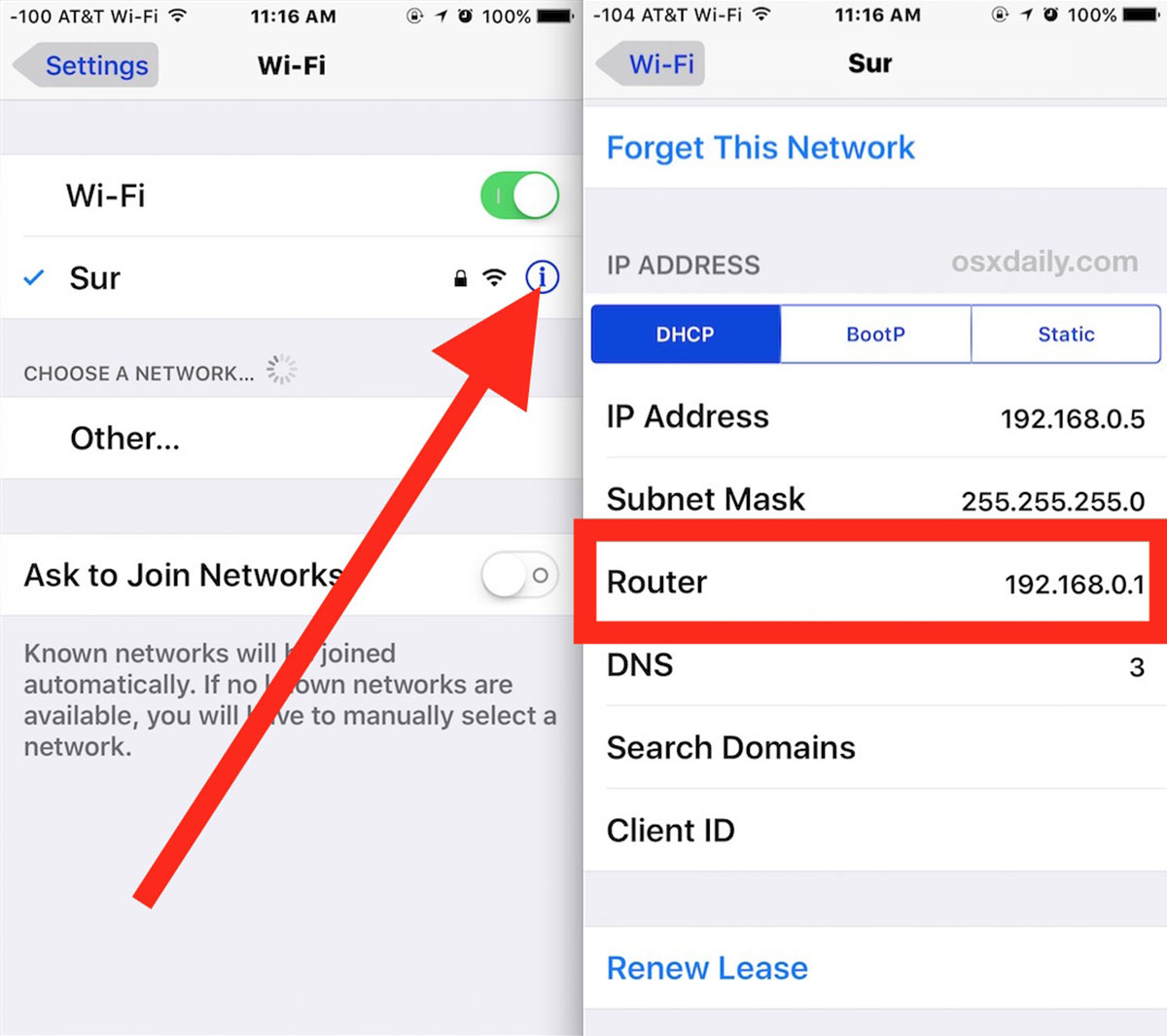Introduction
Changing your IP address allows you to enhance your online privacy, access geo-restricted content, and protect yourself from potential cyber threats. Typically, people rely on VPNs (Virtual Private Networks) to change their IP addresses and enjoy these benefits. However, what if you don’t have access to a VPN or simply prefer not to use one? Is it still possible to change your IP address?
In this article, we will explore various options that allow you to change your IP address without using a VPN. We will discuss alternative methods that can help you achieve the same results as a VPN, such as using a proxy server, utilizing the Tor browser, connecting to public Wi-Fi networks, resetting your router, contacting your internet service provider (ISP), and using a mobile data connection. By understanding these options, you can make an informed decision based on your specific needs and circumstances.
It’s important to note that while these alternatives can provide temporary changes to your IP address, they may not offer the same level of privacy and security as a VPN. Additionally, some methods may have limitations or potential risks that you should be aware of. Therefore, it’s crucial to weigh the pros and cons of each option before deciding which method to employ.
Now, let’s delve into the various methods that can help you change your IP address without relying on a VPN. Whether you’re looking to safeguard your privacy, access region-specific content, or simply explore different internet options, these alternatives have the potential to provide the desired outcome. Keep reading to discover the step-by-step procedures for each method and choose the one that suits you best.
Why Change Your IP Address?
Your IP address is essentially the unique identifier assigned to your device when you connect to the internet. It not only allows websites and online services to recognize you but also provides information about your geographical location. While your IP address plays a crucial role in facilitating online communication, there are several reasons why you might consider changing it:
- Enhanced Privacy: Changing your IP address adds an extra layer of privacy by making it more difficult for websites, advertisers, or malicious individuals to track your online activities.
- Access Blocked Content: Some websites and online services impose geographic restrictions, preventing access from certain locations. By changing your IP address, you can bypass these restrictions and access content that might otherwise be unavailable.
- Circumvent Censorship: In countries with strict internet censorship, changing your IP address can help you bypass government censorship and access a free and open internet.
- Protect Against Cyber Threats: Cybercriminals often target specific IP addresses for various malicious activities, such as hacking, phishing, or identity theft. Changing your IP address can help safeguard your device from these threats.
- Anonymous Browsing: If you value online anonymity, changing your IP address can help mask your real identity and browsing habits.
While using a VPN is the most common method to change your IP address and achieve these benefits, there are other options available if you prefer not to use a VPN or don’t have access to one. In the following sections, we will explore several alternative methods that can help you change your IP address and achieve your desired goals. Remember, each method comes with its own advantages and limitations, so it’s essential to assess which option best meets your specific needs and preferences.
Can You Change Your IP Address Without a VPN?
Yes, it is possible to change your IP address without relying on a VPN. While VPNs offer a secure and convenient way to change your IP address, there are alternative methods available that can provide similar results. These methods involve utilizing different technologies or making adjustments to your network settings.
It’s important to note that changing your IP address without a VPN may have some limitations and potential risks. VPNs offer additional security features, such as encryption and anonymity, that may not be present in alternative methods. Additionally, the effectiveness of these methods may vary depending on your specific circumstances and the purpose for which you want to change your IP address.
In the following sections, we will explore some of the options you can consider to change your IP address without a VPN. These methods include using a proxy server, utilizing the Tor browser, connecting to public Wi-Fi networks, resetting your router, contacting your internet service provider (ISP), and utilizing a mobile data connection. Each of these methods has its own unique approach, and we will provide step-by-step instructions to help you navigate through the process.
It’s important to evaluate the risks and benefits of each method before proceeding. Some methods may offer greater anonymity and security, while others may be simpler to implement. Additionally, keep in mind that these methods may have limitations in terms of the extent to which they can change your IP address or provide a comparable level of protection as a VPN.
By exploring these alternative methods, you can gain more flexibility in changing your IP address based on your specific needs and preferences. Whether you are looking to access geo-restricted content, protect your online privacy, or bypass internet censorship, these options can provide you with viable alternatives to using a VPN.
Option 1: Use a Proxy Server
One of the most common alternatives to changing your IP address without a VPN is by using a proxy server. A proxy server acts as an intermediary between your device and the internet, allowing you to route your internet traffic through a different IP address.
When you use a proxy server, your IP address is masked, and websites or online services see the IP address of the proxy server instead. This enables you to bypass restrictions and access content that may be blocked in your region. Proxy servers can also provide a certain level of anonymity by hiding your real IP address.
To use a proxy server, follow these steps:
- Find a reliable proxy server: Look for reputable proxy server providers or use well-known ones that offer free proxy services.
- Configure your device network settings: Go to your device’s network settings and locate the proxy settings section.
- Enter the proxy server details: Input the IP address or URL of the proxy server, along with the port number if required.
- Save the settings and start browsing: Once the proxy server settings are saved, your device will route its internet traffic through the specified proxy server, thereby changing your IP address.
It’s important to note that not all proxy servers are created equal. Free proxy servers are often slower and less reliable than paid ones. Additionally, some free proxy servers may track your online activities or inject ads into the websites you visit. Therefore, it’s crucial to choose a reputable proxy server and be cautious about the potential risks associated with using free services.
While using a proxy server can change your IP address, it’s important to remember that it may not provide the same level of security and privacy as a VPN. Unlike a VPN, proxy servers do not encrypt your internet traffic, leaving it potentially vulnerable to interception or monitoring. Therefore, if your primary goal is to enhance security and privacy, a VPN is still the recommended option.
Using a proxy server can be a viable alternative to change your IP address without a VPN. It allows you to bypass geographical restrictions, access blocked content, and provide a certain level of anonymity. However, it’s crucial to choose a reliable proxy server provider, be aware of the potential risks, and consider using additional security measures to protect your online activities.
Option 2: Use Tor Browser
Another method to change your IP address without a VPN is by utilizing the Tor (The Onion Router) browser. Tor is a free and open-source browser that allows you to browse the internet anonymously and access websites that may be blocked or restricted in your region.
Tor works by routing your internet traffic through a network of volunteer-operated servers called “nodes” or “relays”. This process helps to conceal your IP address and protect your online privacy. When you use Tor, your internet traffic is encrypted and passed through multiple layers of relays, making it difficult for anyone to trace your online activities back to your device.
To use Tor browser and change your IP address, follow these steps:
- Download and install Tor browser: Visit the official Tor website (https://www.torproject.org/) and download the Tor browser for your operating system.
- Launch the Tor browser: Once the installation is complete, open the Tor browser.
- Start browsing: Use the Tor browser to access websites and navigate the internet. Your IP address will be automatically changed as your traffic is routed through the Tor network.
It’s important to note that while Tor provides anonymity and a different IP address, it may not be the fastest or most suitable option for all browsing activities. Due to the nature of the Tor network, browsing speed may be slower compared to regular browsing. Additionally, certain websites or online services may restrict access to users connecting via Tor to prevent abuse or security concerns.
Furthermore, while Tor is designed to protect your online privacy, it’s crucial to use caution and follow best practices when using the Tor browser. Avoid downloading files or accessing sensitive information while using Tor, as it may compromise your anonymity and expose your real IP address.
Using Tor browser can be an effective alternative to change your IP address without a VPN. It offers anonymity, access to blocked content, and protection of your online privacy. However, be mindful of potential limitations and ensure you use Tor responsibly to maximize its benefits.
Option 3: Use a Public Wi-Fi Network
Using a public Wi-Fi network is another option to change your IP address without a VPN. When you connect to a public Wi-Fi network, your device is assigned a new IP address provided by the network. This can effectively change your IP address and allow you to access region-restricted content or browse the internet anonymously.
To change your IP address using a public Wi-Fi network, follow these steps:
- Find a public Wi-Fi network: Locate a public Wi-Fi network in your vicinity, such as in cafes, libraries, or airports.
- Connect to the Wi-Fi network: Access the Wi-Fi settings on your device and connect to the chosen public network.
- Authenticate if required: Some public Wi-Fi networks may require you to enter a password, agree to terms of service, or provide other authentication details.
- Start browsing: Once connected, your device will be assigned a new IP address from the public network, effectively changing your IP address.
It’s important to note that while using a public Wi-Fi network can change your IP address, it may come with certain risks. Public Wi-Fi networks are typically less secure than private networks, making your device more vulnerable to potential hacking, data theft, or other malicious activities. Therefore, it’s crucial to exercise caution when using public Wi-Fi and take certain precautions to protect your privacy and security.
To mitigate the risks associated with public Wi-Fi networks, consider the following measures:
- Use secure websites: Ensure you visit websites that use HTTPS encryption to protect your data while browsing.
- Avoid sensitive transactions: Avoid accessing or performing sensitive activities, such as online banking or entering personal information, while connected to a public Wi-Fi network.
- Use a firewall and antivirus software: Install and regularly update a reliable firewall and antivirus software on your device to safeguard against potential threats.
- Consider using a VPN or secure connection: If possible, use a VPN or establish a secure connection, such as a mobile hotspot with encrypted tethering, to enhance the security of your connection while using public Wi-Fi.
Using a public Wi-Fi network can be a convenient and viable option to change your IP address without a VPN. It allows you to take advantage of different IP addresses provided by various public networks. However, it’s important to remain cautious and employ additional security measures to protect your online privacy and data.
Option 4: Reset Your Router
Resetting your router is another method that can potentially change your IP address. When you reset your router, it reboots and obtains a new IP address from your internet service provider (ISP). This can be an effective way to change your IP address, especially if you’ve been assigned a static IP address that rarely changes.
Before proceeding with the router reset, it’s important to understand that this approach will reset all your router settings to their default values. This means that any customized settings, such as Wi-Fi passwords or port forwarding configurations, will be lost. Additionally, the steps to reset the router can vary depending on the router model. Therefore, it’s recommended to consult your router’s manual or manufacturer’s website for specific instructions.
To reset your router and change your IP address, follow these general steps:
- Locate the reset button: Find the reset button on your router. It is typically a small hole labeled “Reset” on the back or bottom of the device.
- Press and hold the reset button: Using a paperclip or a small pointed object, press and hold the reset button for about 10-15 seconds.
- Wait for the router to reset: After releasing the reset button, wait for the router to reboot. This process may take a few minutes.
- Access the router settings: Once the reset is complete, you can access the router settings by typing its default IP address (e.g., 192.168.1.1) into your web browser’s address bar and pressing Enter.
- Modify settings if necessary: If desired, you can make any necessary configuration changes in the router settings, such as setting up wireless, security, or port forwarding.
Keep in mind that resetting your router will also disconnect any devices connected to the network. Therefore, it’s important to inform other users or reconnect their devices after the reset.
Resetting your router can be an effective method to change your IP address without a VPN, especially if you have a dynamic IP address that refreshes periodically. This approach allows you to obtain a new IP address from your ISP, giving you a different online identity. However, be aware of the potential consequences, such as the loss of customized router settings, and ensure you are familiar with the specific steps for your router model.
Option 5: Contact Your Internet Service Provider (ISP)
If you want to change your IP address without a VPN, another option is to contact your internet service provider (ISP). ISPs assign IP addresses to their customers, and in some cases, they may be able to change your IP address upon request.
Keep in mind that not all ISPs offer the option to change your IP address, and their policies may vary. Some ISPs may charge a fee for IP address changes, while others may only change the IP address if there is a specific reason, such as network issues or security concerns. Therefore, it’s recommended to contact your ISP’s customer support to inquire about their IP address change policy and process.
To change your IP address through your ISP, follow these general steps:
- Contact your ISP’s customer support: Reach out to your ISP’s customer support team via phone, email, or live chat.
- Request an IP address change: Explain your reason for wanting to change your IP address and inquire about the possibilities and procedures for the change.
- Provide necessary information: Your ISP may require specific information, such as your account details or the reason behind the request.
- Follow any instructions given: If your ISP is able to change your IP address, they will guide you through the necessary steps or handle the process on their end.
It’s important to note that changing your IP address through your ISP may not be an immediate process. It can take some time for your ISP to process the request and assign a new IP address to your connection. Additionally, your ISP may provide you with a different IP address from a different pool, or they may rotate your IP address periodically without your intervention.
Contacting your ISP is a viable option if you wish to change your IP address without a VPN. While the availability and process may vary, consulting with your ISP allows you to explore the possibilities and understand the procedures for changing your IP address. Keep in mind that this option may incur additional costs or have specific terms and conditions set by your ISP.
Option 6: Use a Mobile Data Connection
Using a mobile data connection is another convenient option to change your IP address without a VPN. When you connect to the internet using your mobile device’s cellular network instead of a Wi-Fi network, you will be assigned a different IP address provided by your mobile service provider.
To change your IP address using a mobile data connection, follow these steps:
- Access your device’s settings: Open the settings menu on your mobile device.
- Locate the network or cellular settings: Depending on your device, find the section that contains network or cellular settings.
- Toggle mobile data on: Enable mobile data if it is currently disabled.
- Connect to the internet: Open a web browser or use any internet-connected app to start accessing the internet using your mobile data connection.
By connecting to the internet through your mobile data, your device will be assigned a new IP address by your mobile service provider. This allows you to browse the internet with a different identity and potentially bypass any restrictions associated with your previous IP address.
It’s important to keep in mind that mobile data connections may have limitations compared to Wi-Fi connections. Factors such as signal strength, network congestion, and data caps may impact the performance and availability of your mobile data connection. Additionally, while using mobile data can change your IP address, it may incur additional costs if you exceed your data plan limits.
Using a mobile data connection can be a practical alternative to change your IP address without a VPN, especially when Wi-Fi networks are not available or unreliable. However, it’s essential to monitor your data usage, ensure a stable mobile signal, and consider any associated costs or limitations imposed by your mobile service provider.
Conclusion
Changing your IP address without a VPN is possible through various alternative methods that offer flexibility and options to suit your specific needs. By exploring these methods, you can enhance your online privacy, access geo-restricted content, and protect yourself from potential cyber threats.
Using a proxy server allows you to route your internet traffic through a different IP address, providing anonymity and bypassing restrictions. The Tor browser offers a free and open-source solution for anonymous browsing and accessing blocked content. Connecting to a public Wi-Fi network can change your IP address, but it’s crucial to use caution due to potential security risks. Resetting your router can obtain a new IP address from your ISP, giving you a fresh online identity. Contacting your ISP allows you to inquire about IP address changes, although policies may vary. Utilizing a mobile data connection assigns a new IP address from your mobile service provider, providing an alternative to Wi-Fi networks.
It’s important to consider the limitations and potential risks of each method. The use of a VPN is still the recommended option for comprehensive security and privacy. Additionally, be mindful of the potential consequences and ensure you follow best practices to protect your online activities and personal information.
Ultimately, choose the method that aligns best with your specific goals and circumstances. Whether you prioritize online privacy, accessing restricted content, or establishing a new online identity, these alternative methods can help you change your IP address without relying solely on a VPN.
Remember to conduct further research, follow instructions carefully, and employ additional security measures to ensure a safe and secure browsing experience. By taking proactive steps, you can maximize your control over your online presence and enjoy the benefits of a different IP address without the need for a VPN.

























